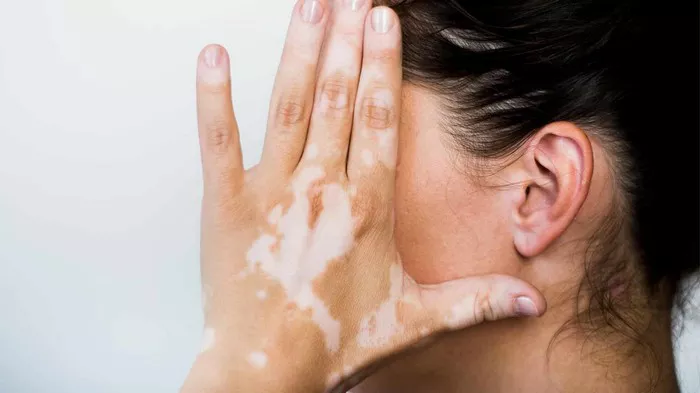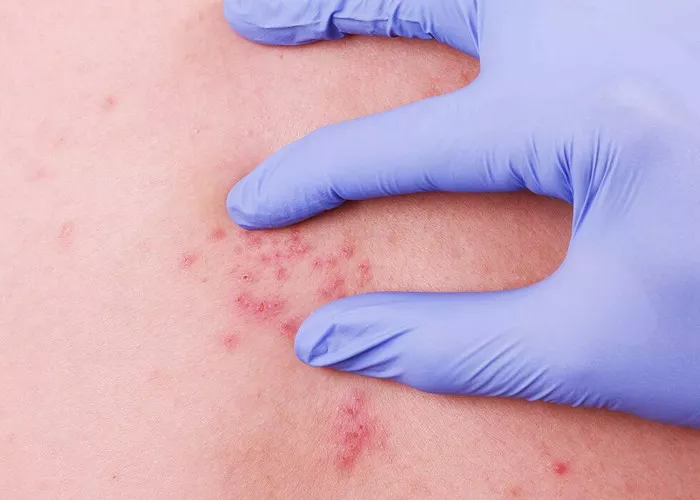Vitiligo is a skin condition characterized by the loss of pigment-producing cells called melanocytes. This results in white patches appearing on various parts of the body, including the face. The condition can affect people of all skin types but is more noticeable in those with darker skin tones. Although vitiligo is not harmful, it can have significant psychological effects due to its impact on appearance.
SEE ALSO: What Causes Vitiligo on Lips
Sun Protection for Vitiligo Patients
Sun protection is crucial for individuals with vitiligo because the depigmented areas of the skin lack melanin, making them more vulnerable to sunburn and long-term sun damage. Regular use of sunscreen with high SPF is essential to protect the skin and prevent further pigmentation changes.
Limitations of Creams
While various creams are available for managing vitiligo, their primary focus is on camouflaging the affected areas or providing symptom relief, such as moisturizing dry skin. It’s important to note that these creams do not cure vitiligo; instead, they offer temporary solutions to improve the appearance and comfort of the skin.
Types of Face Creams for Vitiligo
Concealers/Camouflage Creams
These creams are designed to match the skin tone and cover the white patches caused by vitiligo. They are often highly pigmented and may offer waterproof or long-lasting formulas to ensure coverage throughout the day.
Moisturizers
Moisturizers are essential for keeping the skin hydrated, particularly if it becomes dry or irritated due to vitiligo. They help to soothe the skin and maintain its barrier function, preventing further irritation.
Sun Protection Creams
Given the heightened sensitivity of vitiligo-affected skin to sunlight, sun protection creams with a high SPF (30 or higher) are vital. These creams offer broad-spectrum protection to shield the skin from both UVA and UVB rays.
Other Specialized Creams
Some face creams contain active ingredients like corticosteroids or vitamin D analogs, which are used to manage vitiligo. These ingredients may help in controlling the spread of white patches or potentially repigmenting the skin in some cases.
Key Ingredients to Look For
Hypoallergenic and Fragrance-Free Products
Vitiligo-affected skin can be more sensitive, so it’s important to choose creams that are hypoallergenic and free from fragrances to minimize the risk of irritation.
Ingredients for Concealing Patches
Pigments and Color Correctors: Used in camouflage creams to match skin tone.
Titanium Dioxide and Zinc Oxide: Provide both coverage and sun protection due to their opaque properties.
Ingredients for Moisturizing and Soothing
Hyaluronic Acid: Attracts moisture to the skin, keeping it hydrated.
Ceramides: Help restore the skin’s natural barrier.
Shea Butter and Aloe Vera: Known for their soothing and moisturizing properties, which can calm irritated skin.
Ingredients for Sun Protection
SPF 30 or Higher: Ensures adequate protection from UVB rays.
Broad-Spectrum Protection: Shields the skin from both UVA and UVB rays, reducing the risk of further skin damage.
Best Face Cream Recommendations
Here is a curated list of recommended face creams for vitiligo, categorized by function:
Concealers/Camouflage Creams
A highly pigmented cream that matches various skin tones.
Key Ingredients: Titanium dioxide, iron oxides.
Pros: Long-lasting, waterproof.
Cons: May feel heavy on the skin.
Moisturizers
A gentle, fragrance-free moisturizer that hydrates and soothes vitiligo-affected skin.
Key Ingredients: Hyaluronic acid, ceramides.
Pros: Lightweight, non-greasy.
Cons: May require reapplication during the day.
Sun Protection Creams
A broad-spectrum sunscreen with SPF 50.
Key Ingredients: Zinc oxide, titanium dioxide.
Pros: High SPF, non-irritating.
Cons: Can leave a white cast on the skin.
Other Specialized Creams
A corticosteroid cream for managing vitiligo symptoms.
Key Ingredients: Hydrocortisone, vitamin D analog.
Pros: May help reduce inflammation and repigment the skin.
Consult with a Dermatologist
It’s crucial to consult with a dermatologist before using any new skincare products, especially those containing active ingredients like corticosteroids, to ensure they are appropriate for your skin and condition.
Additional Tips
Makeup Techniques for Concealing Patches
Using makeup techniques such as layering and blending can enhance the effectiveness of concealer creams, helping to achieve a more natural look.
Healthy Diet and Stress Management
Maintaining a healthy diet and managing stress can positively impact overall skin health. Some studies suggest that a balanced diet rich in antioxidants may help in managing vitiligo.
Conclusion
Understanding vitiligo is more than just recognizing the physical manifestations of the condition; it involves acknowledging the emotional and psychological challenges that come with it. As a condition that alters one’s appearance, vitiligo can significantly impact self-esteem and social interactions. However, with proper management strategies, including sun protection, the use of specialized creams, and psychological support, individuals with vitiligo can lead fulfilling lives. It’s also essential for society to become more educated about vitiligo to reduce misconceptions and promote inclusivity. Through continued research, support, and awareness, the journey of living with vitiligo can become less daunting and more empowering for those affected.
Related Topics:



























